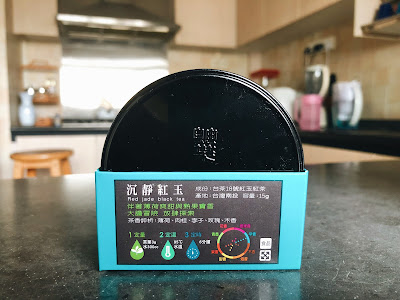A friend went to Taiwan and got me this as a gift!
This tea is a Red Jade Black tea and according to the description on the website, it’s made using the No. 18 cultivar, which itself is a cross between camellia sinensis var. assamica and the native Taiwanese tea plant.
By the way, I’m still trying to get myself straight on what cultivars are, but from what I understand, the variety is what occurs in the wild while a cultivar (cultivated variety) is the breed of plant that is cultivated intentionally.
This tea has a malty taste that reminds me more of British black teas than it does Japanese black teas, which I guess shouldn’t be surprising since it’s from the Assam variety of the tea plant. It’s quite astringent, though not bitter so it should pair well with very rich foods (I think?). While it’s not as bright as some of the black tea blends I’ve had (Benson’s English Breakfast and Clipper’s Everyday tea come to mind), this is a mellow and sweet tea.
I also brought this to the office to illustrate the difference between astringency and bitterness. To me, astringency is a mouthfeel while bitterness is a taste and while they often increase in intensity together, they are separate things. Since this is a non-bitter but astringent tea, it’s a good tea to use to illustrate what astringency is like. My tea-loving boss (predictably) loved this, but while our interns appreciated the opportunity to know more about astringency, they did not really want a second cup because the tea made them thirsty.
Personally, I would drink this tea after a rich meal, when I need something that’s a little more drying. It’s delicious, but not something I’d reach for when I’m thirsty given is astringency levels.
Thanks, C, for getting me this tea!
Product Page (English)
Leaffree site (Chinese)

